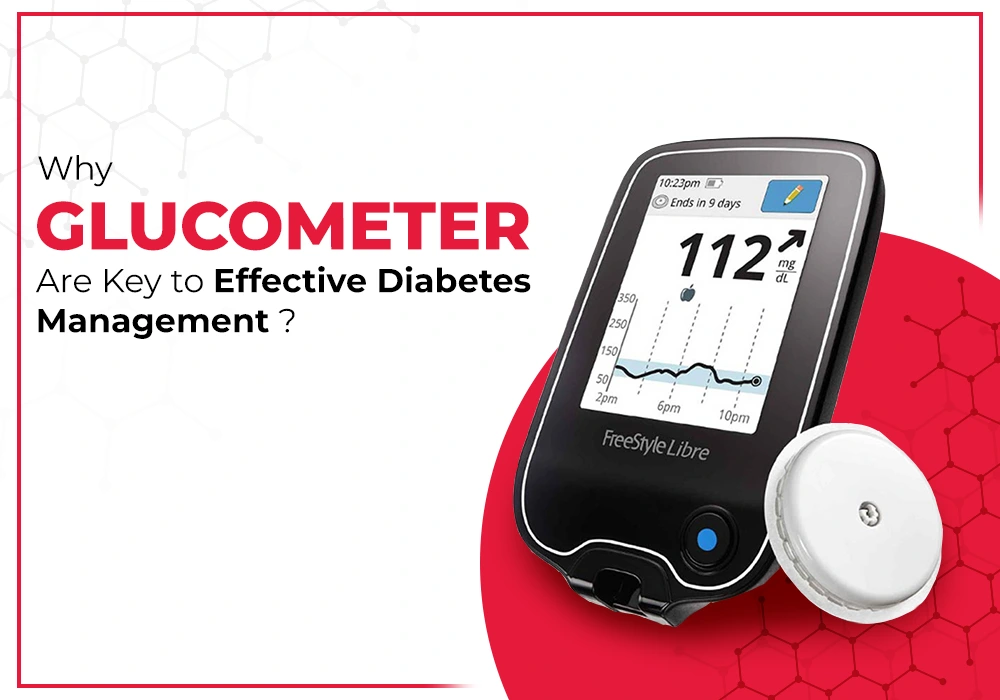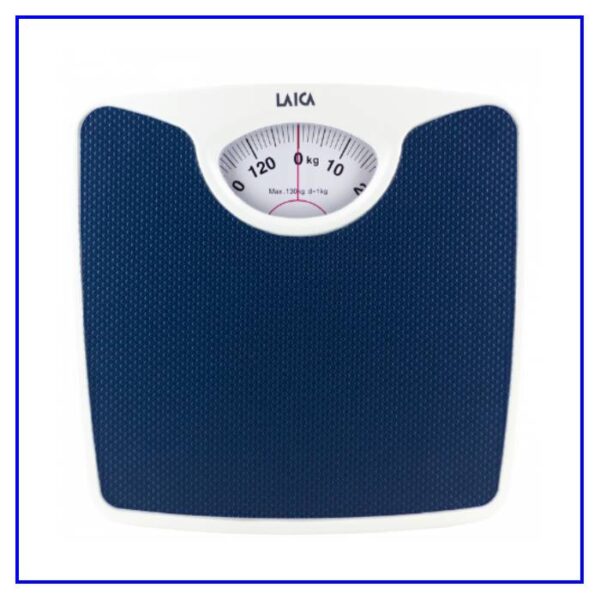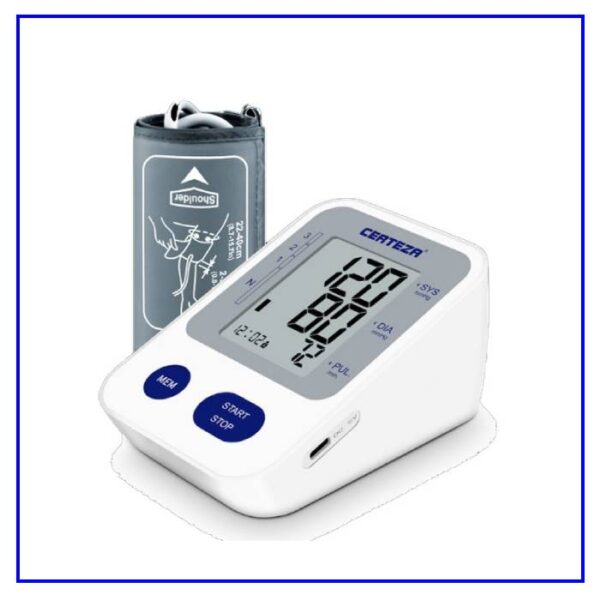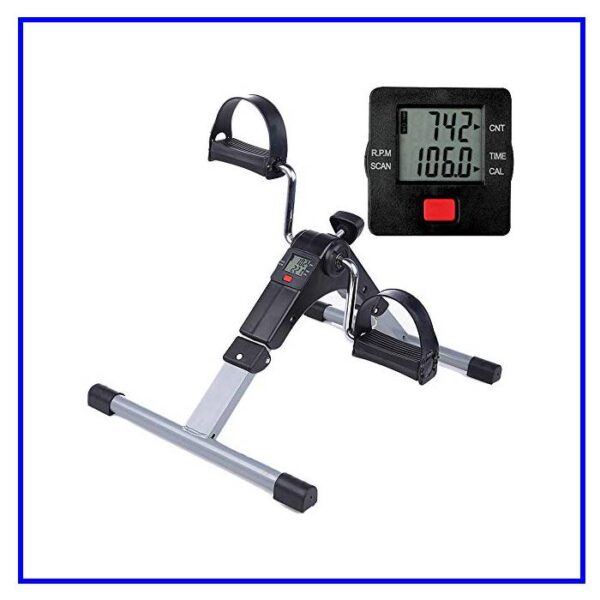Controlling diabetes valuably demands continuous careful observation and errorless monitoring of blood glucose levels. This is where a Glucometer becomes a crucial tool. A glucometer, also called a Blood glucose meter or diabetes meter, is a portable machine that permits people to calculate their blood sugar levels efficiently and error-free. In this blog, we’ll discover why glucometers are crucial for diabetes control, how they perform their services, and the benefits they offer. We’ll also discuss related tools like Glucose monitors and sugar testing machines, which further enhance diabetes care.
What is a glucometer?
A glucose meter, also referred to as a Glucometer, is a medical device for determining the approximate concentration of glucose in the blood. It can also be a strip of glucose paper dipped into a substance and measured to the glucose chart.The glucometer is portable and accessible.
Glucometers are a foundation of diabetes control, allowing people to detect their blood sugar levels daily and making literate solutions about their diet, medication, and lifestyle.
The role of a glucometer in diabetes management
A blood glucose meter is a small, portable machine that’s used to measure how much glucose (a type of sugar) is in the blood (also known as the blood glucose level). People with diabetes often use a blood glucose meter to help them manage their condition.CGMs continually monitor your blood glucose (blood sugar), giving you real-time updates through a device that is attached to your body. They have become popular and more accurate over the years and are now considered a viable treatment option for people with diabetes.
1. Empowering patients
A glucometer puts the diabetic control in the hands of an individual.We can get accurate readings and other adjustments by the machine for a better sugar level in blood. This way we can decrease the increase or decrease of sugar in our blood streams.
2. Preventing Hypoglycemia and hyperglycemia
Hypoglycemia (low blood sugar) and hyperglycemia (high blood sugar) are common risks for people with diabetes.A glucometer can be used to detect such conditions before things get worse and also give an effective treatment too.
3.Tailoring treatment plans
Health care providers rely on the data of the glucometer so that when a patient’s data arrives they can get to work immediately.A glucometer’s result can allow the doctors to give an effective dietary recommendations,medications and insulin doses to achieve the perfect results
How does a glucometer works
- Prepare the device: Insert a test strip into the glucometer.
- Obtain a blood sample: Use a lancet to prick your fingertip and collect a small drop of blood.
- Apply the blood: Touch the test strip to the blood sample.
- Check the results: Within seconds, the glucometer will display your blood glucose level.
Modern glucometers often come with additional features, such as:
- Memory track: Tracks previous readings to identify trends.
- Bluetooth connectivity: Syncs data with smartphones or computers for easy sharing with healthcare providers.
- Alerts: Notifies users to check their blood sugar at specific times.
Types of Glucometers
There are two main types of devices for checking your blood sugar. These types of glucometers and how they work are different, and choosing what’s best will depend on your specific situation.
The two main types of glucometers includes:
- Standard blood glucose meters, used to check your blood sugar at a given moment.
- Continuous glucose monitors that check your blood sugar at all times.
Glucose meters are available over the counter at drugstores and other stores that sell pharmaceutical products. They can also be purchased online. Some healthcare providers and diabetes educators also stock glucometers.
Benefits of glucometer
First, it allows patients and clinicians to detect high or low blood glucose levels, thereby facilitating therapeutic adjustments to achieve long-term A1c goals. Second, SMBG helps protect patients by allowing them to immediately confirm acute hypoglycemia or hyperglycemia.
Tips of using a glucometer effectively
To get the most out of your glucometer, follow these tips:
- Wash Your hands: Clean your hands for accurate readings.
- Use fresh strips: Expired or damaged strips can mess with results.
- Keep track of your sugar levels: Keep a log of your blood sugar levels to identify patterns and trends.
- Ask your doctor: Share your glucometer data with your healthcare provider to fine-tune your treatment plan.
The Future of Blood Glucose Monitoring
The future is bright for the glucometer, with further advancements in blood glucose monitoring technology. Innovations like non-invasive glucometers, AI-powered glucose monitors, and wearable devices are set to revolutionize how we track and manage blood sugar levels.
1. Non-Invasive Glucometers
Researchers are creating glucometers that can calculate blood sugar levels without the need for finger pricks. These devices use technologies like infrared light or saliva analysis to provide pain-free monitoring.
2. AI-Powered Glucose Monitors
AI is used and welded into glucose monitors to make life easiere in the world. You don’t have to anytime sugar levels low go to the hospitals . The AI would bring out the need of quicker processes.
3. Wearable devices
Wearable glucose watches are pretty popular among people. The watch could measure the sugar levels and keep a diabetic management by scanning the person’s arm and giving real time data.
Conclusion
A glucometer is more than just a machine—it’s a lifeline for patients who are trying to control diabetes. By giving accurate and timely blood glucose readings, glucometers motivate patients to manage their health and avoid complications. Whether you’re using a traditional glucometer, a glucometer, or a sugar testing machine, these tools are important for effective diabetic control .
As technology continues to advance, the future of blood glucose monitoring looks surprisingly very bright , with innovations that promise greater convenience, accuracy, and ease of use. Accept the power of glucometers and be the first to step toward better diabetes control today.






